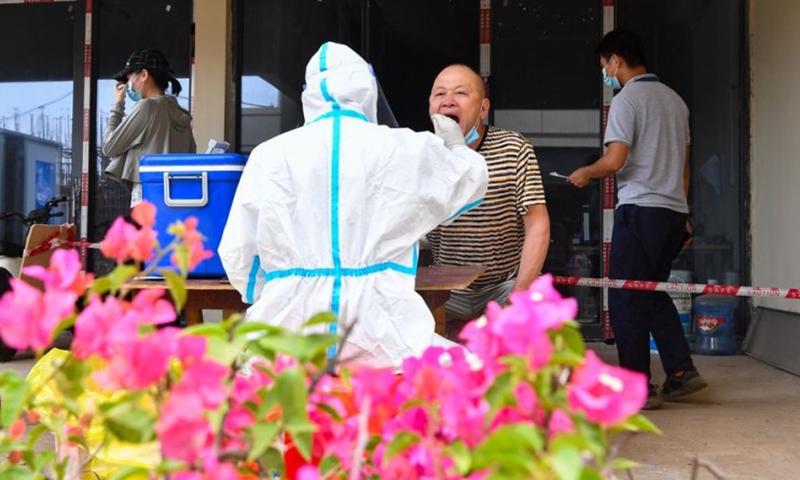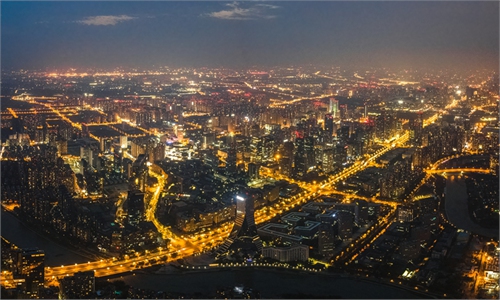Chinese localities urge public to stay put or reduce travel during upcoming holidays to stop COVID

Workers line up for nucleic acid testing at the construction site of a residential area in Jiangdong New Area of Haikou, south China's Hainan Province, Sept. 2, 2022.Photo: Xinhua
At a press conference on Saturday, Beijing officials said that with two holidays approaching and the mobility of people entering and returning to Beijing continuing to increase, the capital will be stricter in managing the prevention and control of the epidemic.
North China's Tianjin Municipality on the same day asked its residents not to leave Tianjin in the near future unless necessary. People arriving in Tianjin from other provinces and cities were advised not to gather or go to crowded places for seven days.
Many cities in East China's Shandong Province have also issued notices encouraging residents to spend the holidays locally and to encourage locals living outside the province not to come home for the time being.
The governments of several cities and counties in Southwest China's Sichuan, Central China's Hunan, Northeast China's Heilongjiang and North China's Hebei Provinces have issued similar announcements advising residents not to leave their cities and are also advising locals in other provinces not to return to their hometowns for the time being.
Currently, 33 cities in China are under partial or full static management because of COVID-19 outbreaks, including seven provincial capitals and one municipality, Caixin reported. More than 65 million residents have been affected.
On Saturday, more than 20 provincial-level regions in the Chinese mainland reported 1,673 locally transmitted cases. Two days earlier, on Thursday, 103 cities in 26 provincial-level regions reported locally transmitted COVID-19 cases, the highest in China since the COVID-19 pandemic broke out in early 2020, according to Caixin.
However, despite the epidemic, enthusiasm for Mid-Autumn travel remained high. Data from an online ticketing service platform shows that as of August 30, Mid-Autumn Festival holiday orders increased 137% compared to the same period of the Dragon Boat Festival in June, and orders for airline tickets and train tickets increased nearly two times and five times, respectively.
Experts warn that inter-province travels may bring additional risks in the current epidemic situation.
"In the current wave of the epidemic, there are many cities reporting cases that cover a wide range of areas. In some cities, the chain of transmission of the epidemic has not yet been investigated," an immunology expert told the Global Times on Sunday on condition of anonymity, noting that there is a greater risk of spreading the epidemic with cross-province travels.
The expert noted that another concern is that many popular destination provinces for tourism have seen larger outbreaks in the current resurgence, including South China's Hainan, Southwest China's Xizang and Yunnan, and Northwest China's Xinjiang. "This is somewhat linked to large-scale trips during the school summer holidays," he said.


